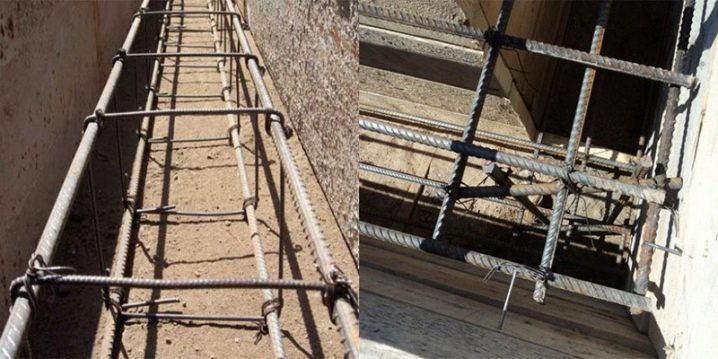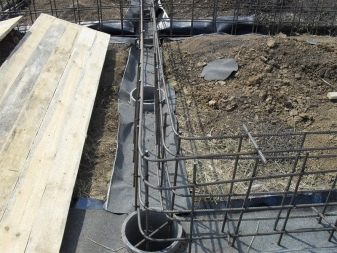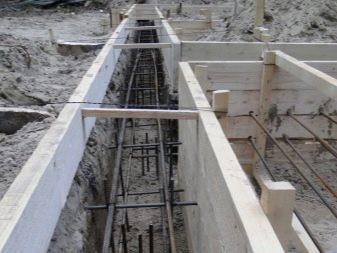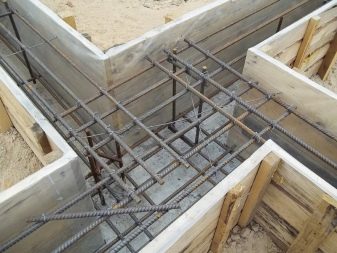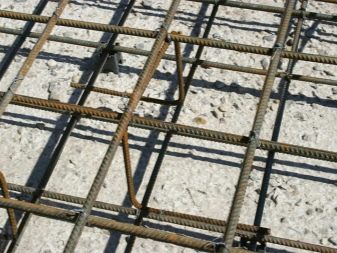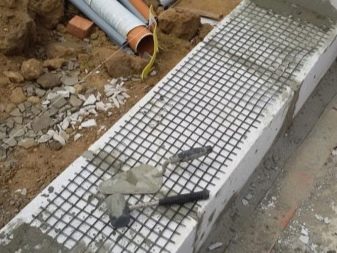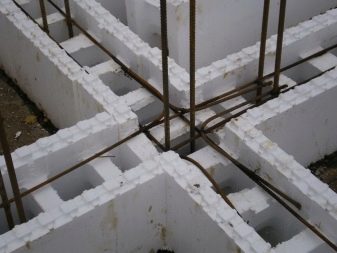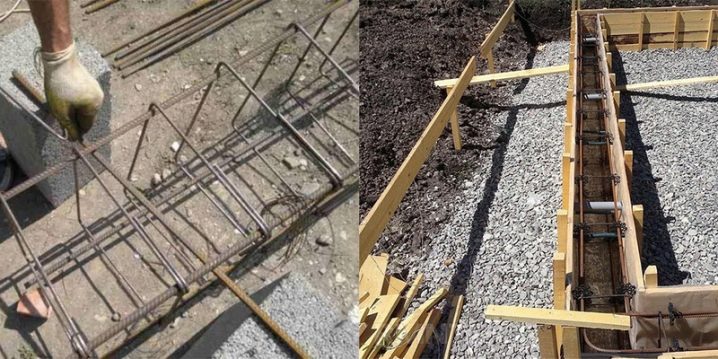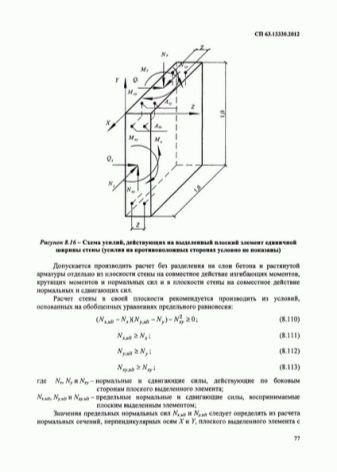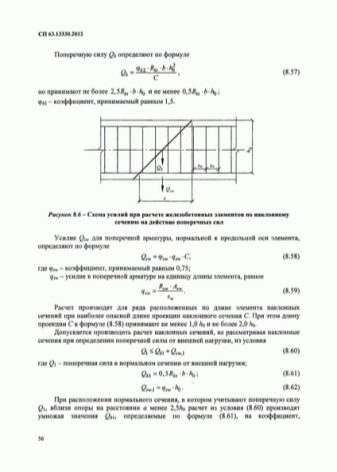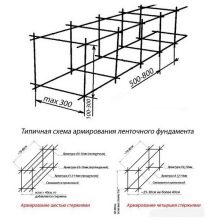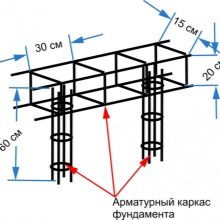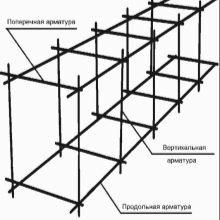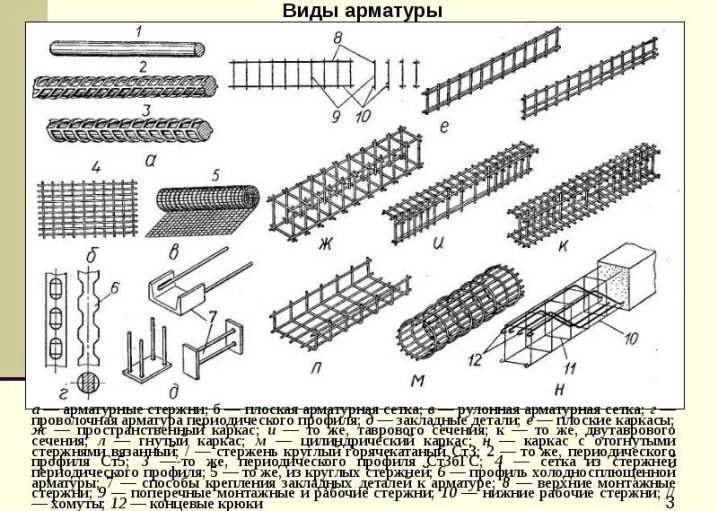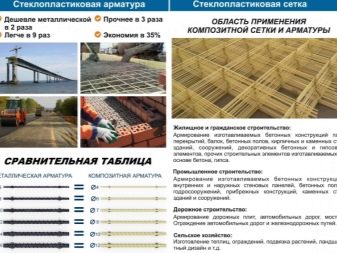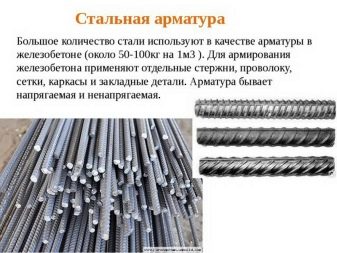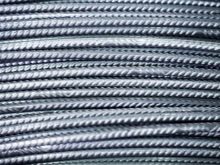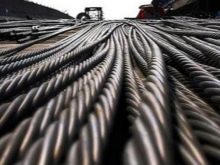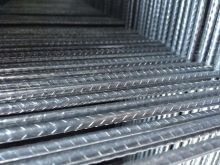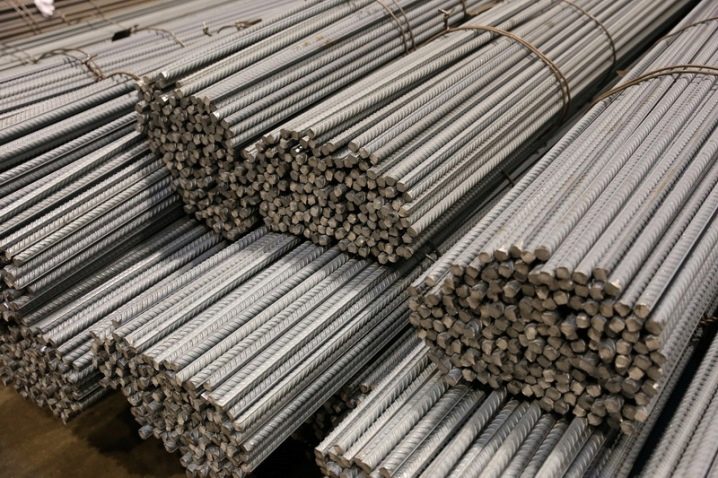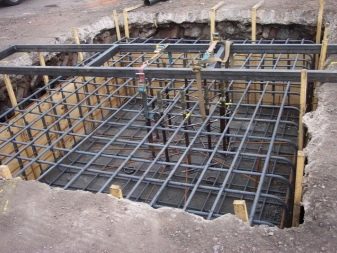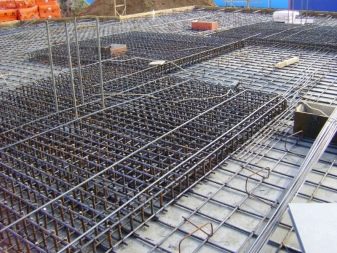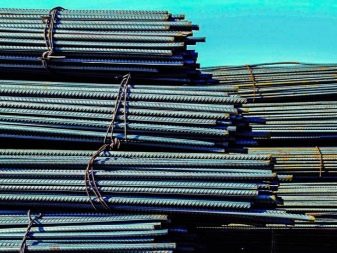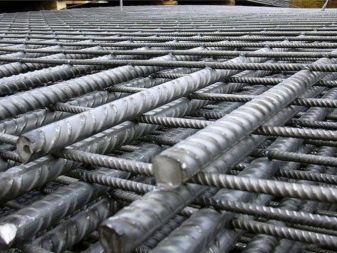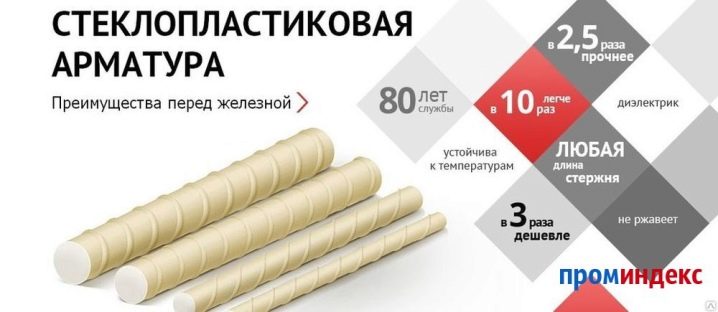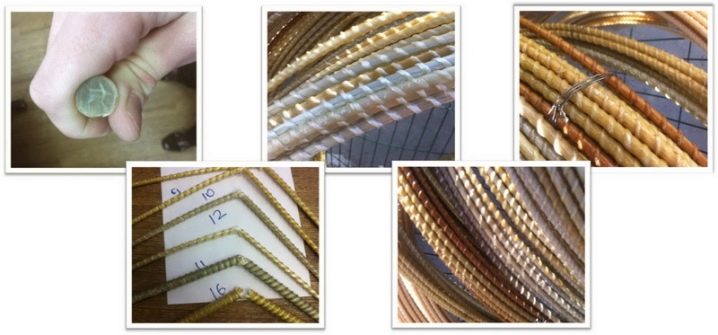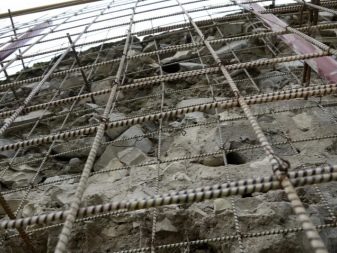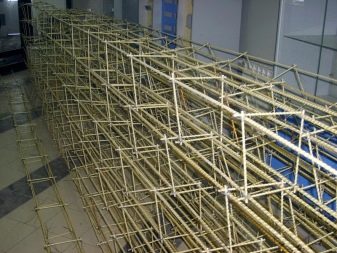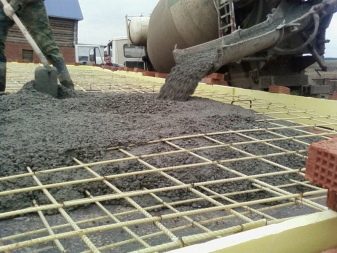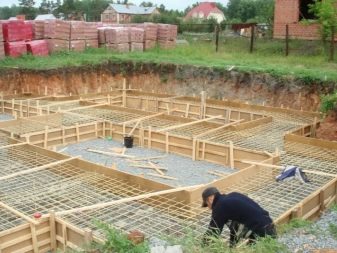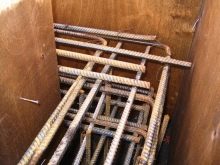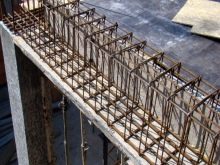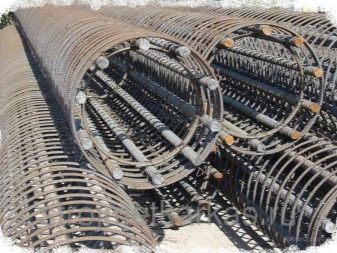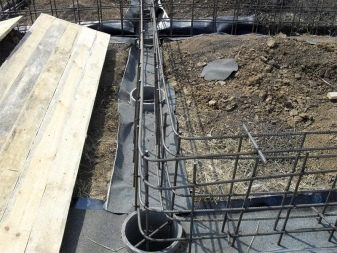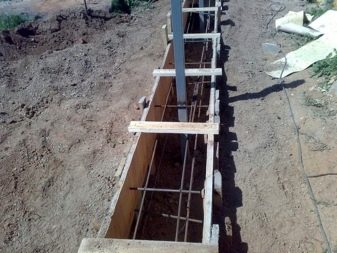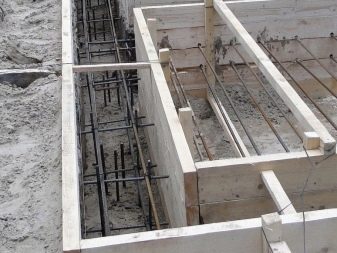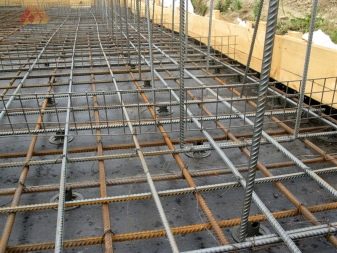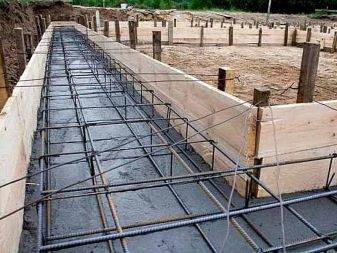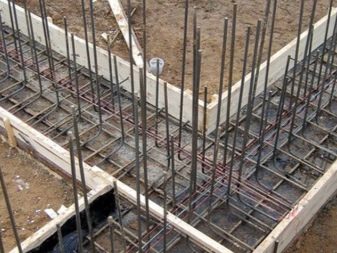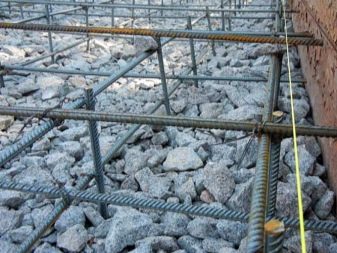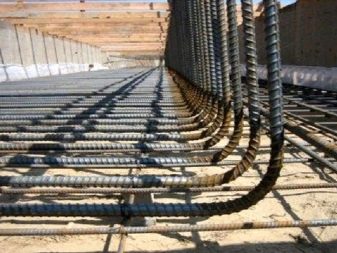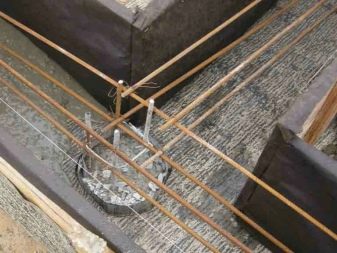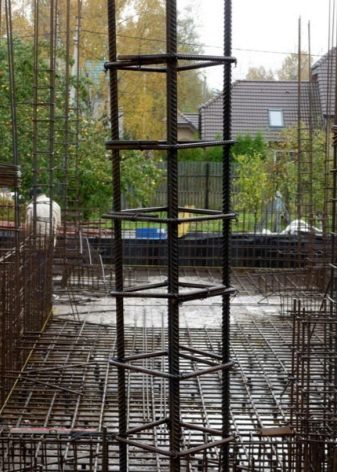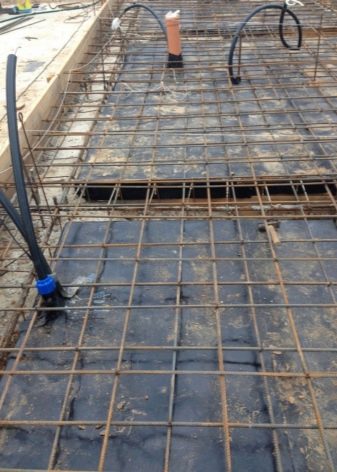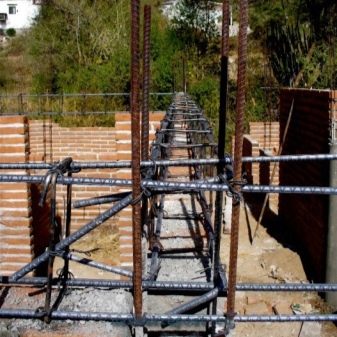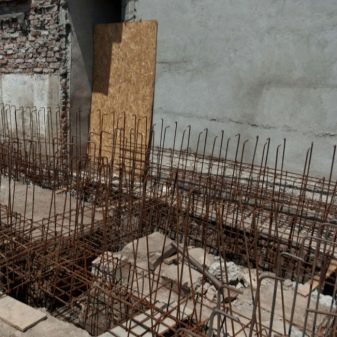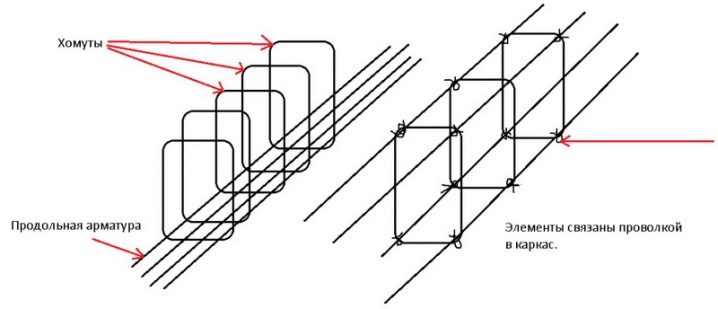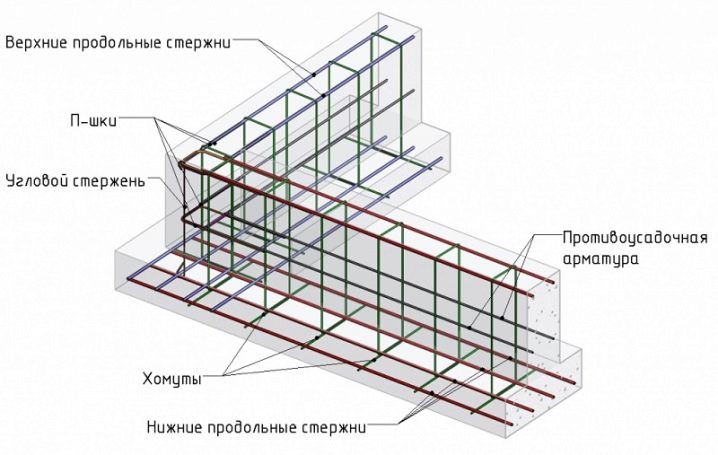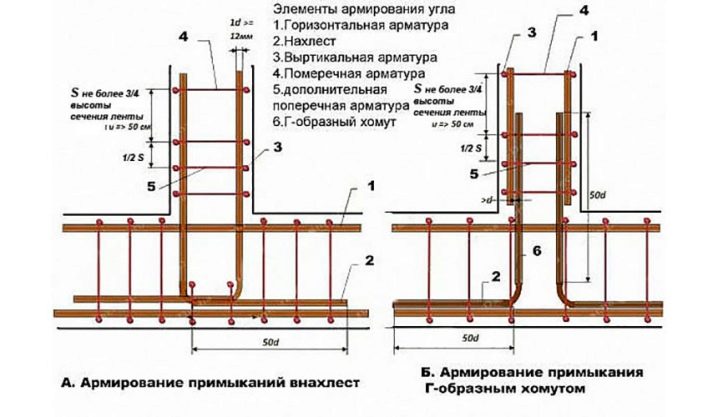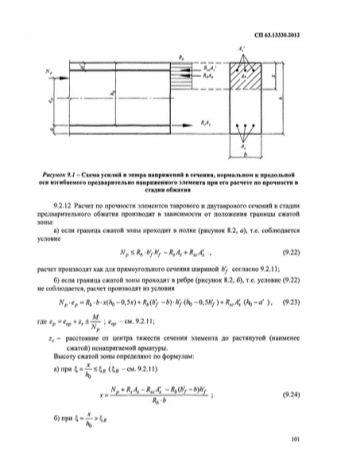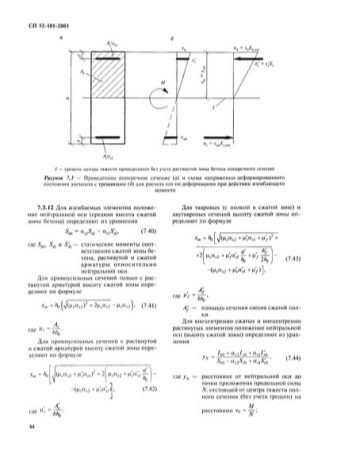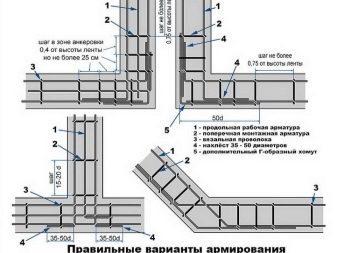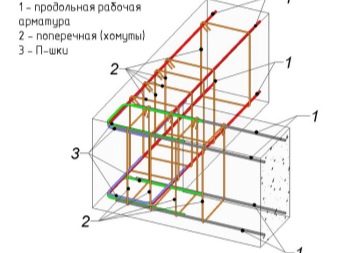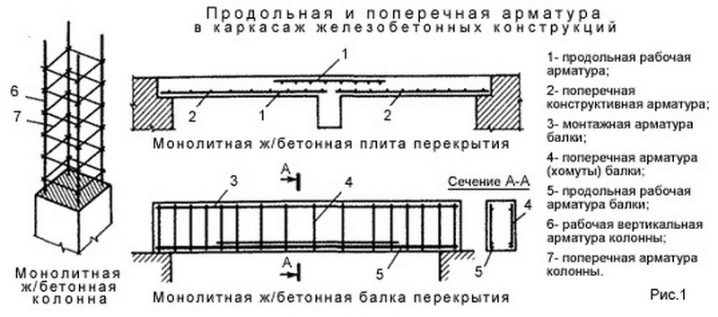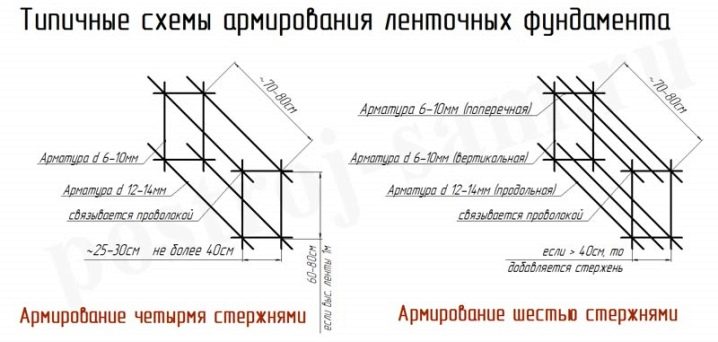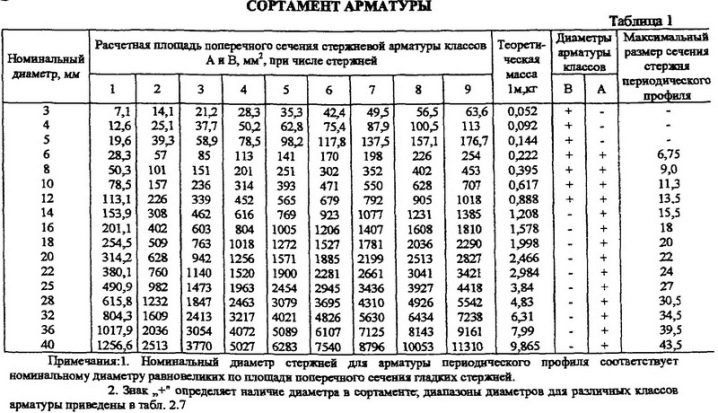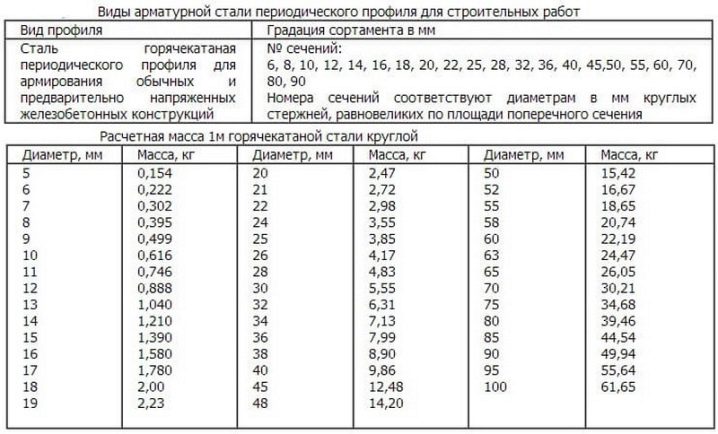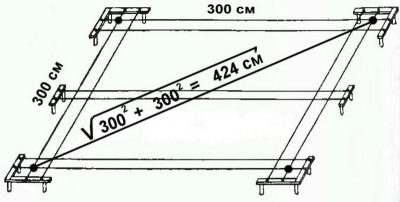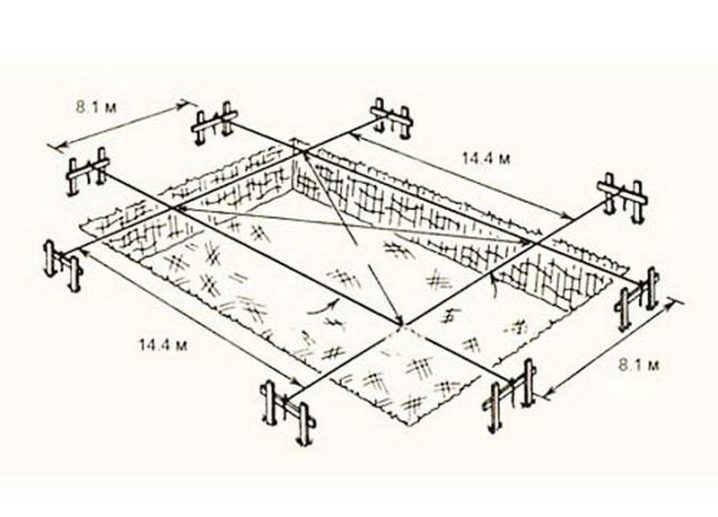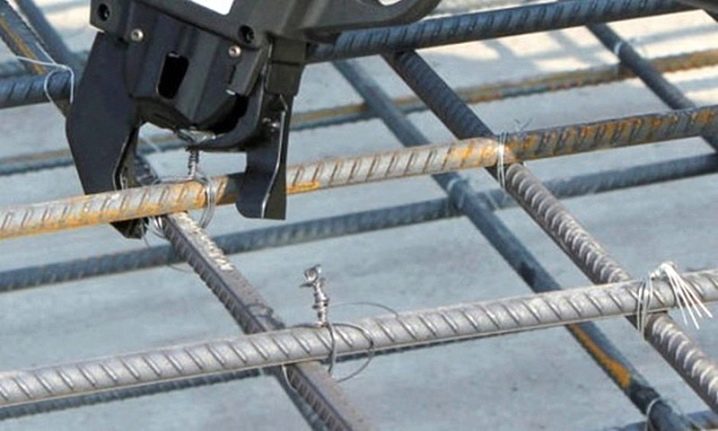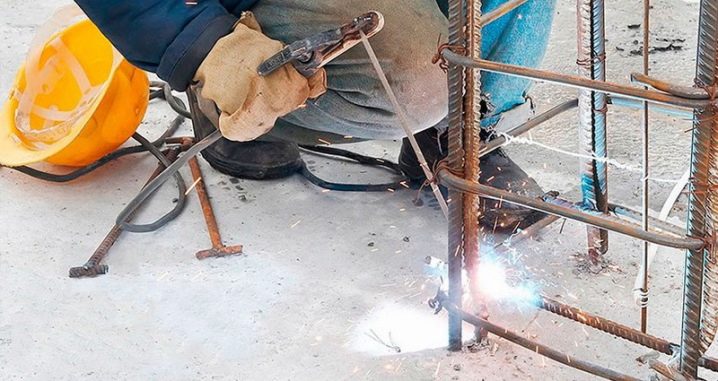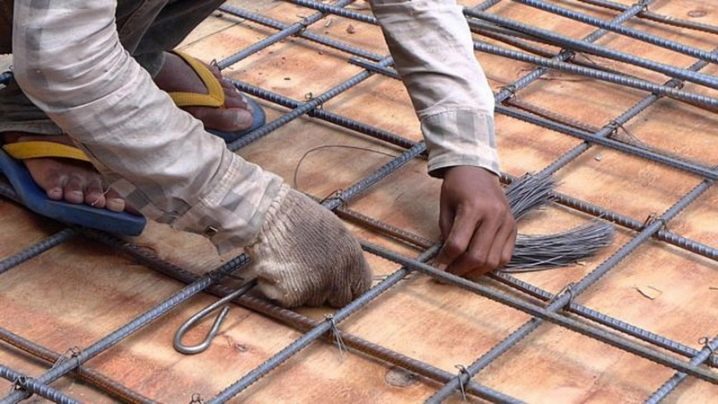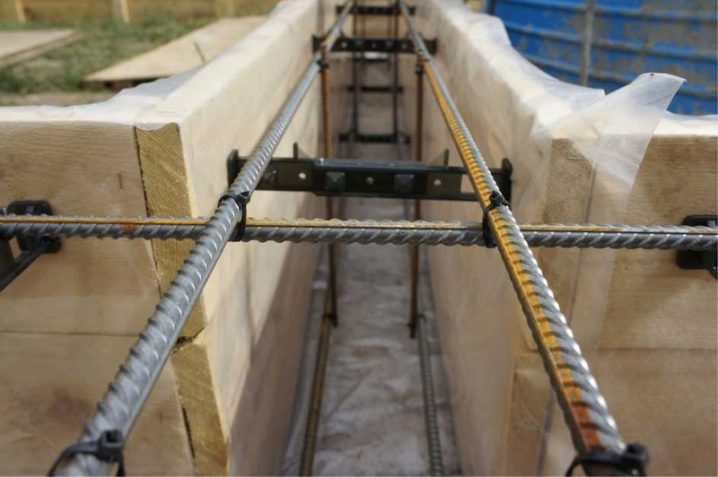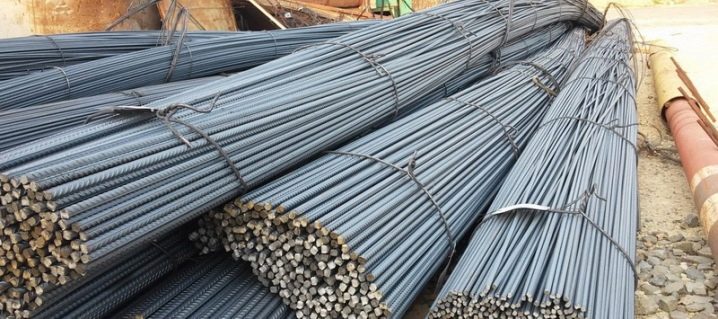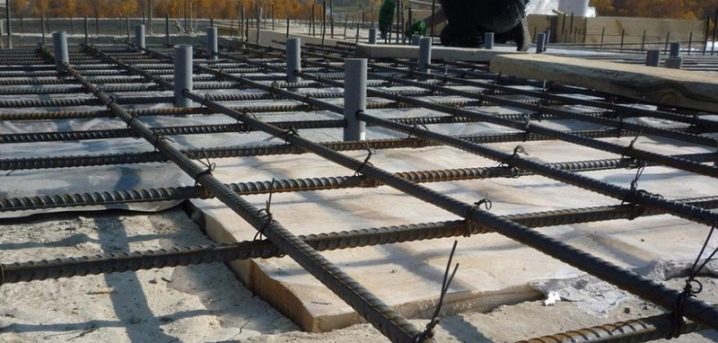Subtleties of selection and installation of reinforcement for the foundation
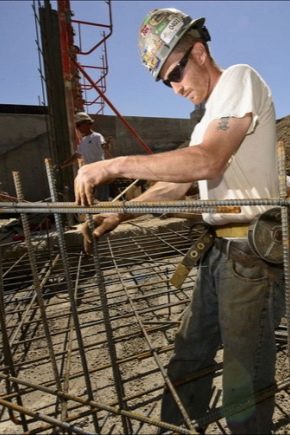
Foundation has become traditional in the construction of any building, it ensures its stability, reliability, protects the building from unforeseen soil displacements. Performance of these functions concerns, first of all, the correct installation of the foundation, while respecting all possible nuances. This also applies to the correct use of reinforcing elements in the structure of reinforced concrete base, so today we will try to reveal all the details of the selection and installation of reinforcement for the foundation.
Special features
Each builder understands that ordinary concrete without special reinforcing elements is not sufficiently strong in its structure - especially when it comes to large loads from dimensional buildings.The base plate performs the dual role of restraining loads: 1) from above - from a building or structure and all the elements inside it; 2) from below - from soil and soil, which under certain conditions can change their volumes - an example of that heaving of the soil due to the low level of soil freezing.
By itself, the concrete is able to perceive the enormous compressive stress, but when it comes to stretching - it clearly needs additional reinforcing or fixing structures. To avoid serious damage to the structure and increase its service life, developers have long been developed type of laying of reinforced concrete foundations, or laying concrete together with reinforcing elements.
The most obvious advantage in laying the foundation with reinforcing elements is its strength. Iron, steel or fiberglass (we will look at the types below) provides additional reliability and integrity for the entire installation, the reinforcement fixes the concrete in a predetermined position, and evenly distributes the load and pressure to the whole base.
A particular disadvantage of using reinforcement parts is that foundations of this type are installed much longer., their installation is more complicated, it requires more equipment, more stages of preparation of the territory and more workers. Not to mention the fact that the selection and installation of reinforcing elements have their own codes of rules and regulations. However, it is difficult to talk about cons, since almost no one uses the foundation without reinforcement parts.
The general parameters on which the technician should rely when selecting reinforcement are:
- the potential weight of the building with all add-ons, frame systems, furniture, appliances, ground or attic floors, even with a load of snow;
- foundation type - reinforcing elements are installed in almost all types of the foundation (it is monolithic, pile, shallow-depth), however, the installation of a reinforced concrete foundation is most often understood as a tape type
- the specifics of the external environment: average temperature values, the level of soil freezing, heaving of the soil, groundwater level;
- the type of soil rocks (the type of reinforcement, as well as the type of foundation, strongly depends on the composition of the soil, loam, clay and sandy loam is most common).
As you can see, the choice of reinforcement for the foundation is subject to the same externalimpacts, as well as the foundation itself, and therefore must take into account all the rules and regulations for installation.
Regulatory requirements
As already mentioned, the installation of reinforcement in a reinforced concrete foundation is governed by a separate set of rules. Technicians use the rules edited by SNiP 52-01-2003 or SP 63.13330.2012 under clauses 6.2 and 11.2, SP 50-101-2004 some information can be found in GOST 5781-82 * (if it comes to using steel as a reinforcing element). These sets of rules can be difficult for the perception of a novice builder (taking into account weldability, ductility, corrosion resistance), however, anyway, sticking to them is the key to successful construction of any building. In any case, even when hiring specialized workers to work at your facility, the latter should be guided by these standards.
Unfortunately, you can select only the basic requirements for the reinforcement of the foundation:
- working rods (which will be discussed below) should be at least 12 millimeters in diameter;
- as for the number of working / longitudinal bars in the frame itself, the recommended figure is 4 or more;
- relative to the pitch of the transverse reinforcement - from 20 to 60 cm, while the transverse rods should be with a diameter of at least 6-8 millimeters;
- reinforcement of potentially dangerous and vulnerable to load places in the reinforcement occurs through the use of tufts and legs, clamps, hooks (the diameter of the last elements is calculated from the diameter of the rods themselves).
Kinds
Choosing the necessary reinforcement for your building is not easy. The most obvious parameters for the selection of reinforcement for the foundation is the type, class, and steel grade (if we are talking about steel structures). There are several types of reinforcement elements on the market for the foundation, depending on the composition and purpose, the shape of the profile, the manufacturing technology, and the peculiarities of the load on the foundation.
If we talk about the types of reinforcement for the foundation based on the composition and physical properties, then there are metal (or steel) and fiberglass reinforcement elements. The first type is most common, it is considered to be more reliable, inexpensive and proven not by one generation of technicians. However, now it is increasingly possible to meet reinforcing elements made of fiberglass, they appeared in mass production not so long ago, and many technicians still do not risk using this material in the installation of large-sized buildings.
There are only three types of steel reinforcement for the foundation:
- hot rolled (or A);
- cold deformed (BP);
- cable car (K).
At installation of the base the first type is used, it is strong, elastic, steady against deformation. The second type, which some developers like to call wire, is cheaper and is used only in individual cases (usually - reinforcement grade 500 MPa). The third type has too high characteristics of strength, its use in the base of the foundation is impractical: both economically and technically expensive.
What are the advantages of steel structures:
- high reliability (sometimes low-alloy steel with extremely high rigidity and strength is used as reinforcement);
- resistance to huge loads, the ability to contain enormous pressure;
- electrical conductivity - this function is rarely used, however, with the help of it an experienced technician will be able to provide the concrete structure with high-quality heat for a long time;
- if welding is used in the joint of the steel frame, then the strength and integrity of the whole structure does not change.
Separate cons of steel as a material for reinforcement:
- high thermal conductivity and, as a result, reinforced concrete bases transmit heat more in buildings, which is not very good in residential premises at low external temperatures;
- susceptibility to corrosion (this item is the biggest "scourge" of large buildings, the developer can additionally treat steel from rust, but such methods are very economically unprofitable, and the result is not always justified due to differences in loads and the effect of moisture);
- large total and specific gravity, which makes it difficult to install steel products without specialized equipment.
We will try to understand the advantages and disadvantages of fiberglass reinforcement. So, the advantages:
- fiberglass is much lighter than steel analogues, therefore, it is easier to transport and easier to install (sometimes does not require special equipment for installation);
- The absolute strength limits of fiberglass are not as great as those of steel structures, however, high specific strength indicators make this material suitable for installation in the foundations of relatively small buildings;
- Not susceptible to corrosion (rust) makes fiberglass somewhat uniquematerial in the construction of buildings (the most durable steel elements often need additional processing to increase the service life, fiberglass does not require these measures);
- If steel (metal) structures are by their nature excellent electrical conductors and cannot be used in the production of energy enterprises, then fiberglass is an excellent dielectric (that is, it does not conduct electric charges badly);
- Fiberglass (or a bundle of fiberglass and a binder) was developed as a cheaper equivalent to steel models, even regardless of the cross section, the price of fiberglass reinforcement is much lower than steel elements;
- low thermal conductivity makes fiberglass an indispensable material in the manufacture of the foundation and floors to maintain a stable temperature inside the object;
- the design of some alternative types of fittings allows you to install them even under water, this is due to the high chemical resistance of materials.
Of course, there are disadvantages to using this material:
- fragility is in some way the hallmark of fiberglass, as has already been said, in comparison with steel, the indicators of strength and rigidity are not so great here, this repels many developers from using this material;
- fiberglass reinforcement is extremely unstable to wear and wear without additional treatment with a protective coating (and since the reinforcement is placed in concrete, it is impossible to avoid these processes under loads and high pressure);
- high thermal stability is considered one of the advantages of fiberglass, however, the binder in this case is extremely unstable and even dangerous (in case of a fire, fiberglass rods can simply melt, so you can not use this material in the foundation with potentially high temperature values) safe for use in the construction of ordinary residential buildings, small buildings;
- low values of elasticity (or ability to bend) make fiberglass an indispensable material in the installation of some individual types of low pressure foundations, however, again - this parameter is rather a disadvantage for foundations of buildings with a large load;
- poor resistance to certain types of alkalis, which can lead to the destruction of the rods;
- if welding can be used to connect steel, fiberglass cannot be connected in this way due to its chemical properties (this is a problem or not - it is definitely difficult to solve, since even metal frames today are more knit than welded.
If we approach the varieties of reinforcement in more detail, then in the section it can be divided into round and square types. If we are talking about a square type, then it is used in construction much less often, it is applicable when installing corner supports and creating complex intake structures. Corner reinforcement square type can be both sharp and relaxed, and the side of the square varies from 5 to 200 millimeters, depending on the load, the type of foundation and purpose of the building.
Round type fittings are smooth and corrugated type. The first type is more versatile and is used in completely different areas of the construction industry, but the second type is common when installing foundations, and this is quite understandable - valves with successive corrugations are more adapted to large loads and fixes the foundation in the initial position even in case of overpressure.
The corrugated type can be divided into four types:
- the working type performs the function of fixing the foundation under external loads, as well as taking care to prevent the formation of chips and cracks in the foundation;
- distribution type also performs the function of fixation, but it is precisely the working reinforcing elements;
- the mounting type is more specific and is necessary only at the stage of joining and fixing the metal frame, it is necessary for distributing reinforcing bars in the correct position;
- clamps, in fact, do not perform any function, except for a bundle of reinforcement parts into one, for subsequent placement in trenches and pouring concrete.
There is a classification of corrugated products and the type of profile: ring, sickle, mixed or combined. Each of these types is applicable in specific conditions of load on the foundation.
Dimensions
The main parameter of the choice of reinforcement for the foundation is its diameter or cross section. Such a value as the length or height of the reinforcement is rarely used in construction, these values are individual for each building and each technician has his own resources in the construction of the building.Not to mention the fact that some manufacturers ignore generally accepted standards for the length of reinforcement and are prone to the production of their models. The reinforcement of the basement is of two types: longitudinal and transverse. Depending on the type of foundation and the load section can vary greatly.
Longitudinal reinforcement usually involves the use of ribbed reinforcing elements, for the transverse type reinforcement - smooth (the cross section in this case is 6–14 mm) of classes A-I - A-III.
If you follow the normative codes of rules, you can determine the minimum values of the diameter of individual elements:
- longitudinal rods up to 3 meters - 10 millimeters;
- longitudinal from 3 and more meters - 12 millimeters;
- transverse rods up to 80 centimeters high - 6 millimeters;
- transverse rods from 80 centimeters to 8 millimeters.
As already noted, these are only the minimum allowable values for reinforcement of the foundation and these values are more likely to be valid for the traditional type of reinforcement - for steel structures. Besides - do not forget that any question in the construction of buildings, and especially in the construction of objects of non-standard type with a previously unknown potential load, should be decided individually on the basis of the rules of SNiP and GOST.It is quite difficult to calculate the following value on your own, but this is also a recognized standard - the diameter of the steel frame should not be less than 0.1% of the entire foundation (this is only the minimal percentage).
If we are talking about construction in areas with unstable soil (where installation of brick, reinforced concrete or stone buildings is unsafe because of their large total weight), then rods with a cross section of 14 mm or more are used. For smaller buildings, conventional reinforcement cages are used, however, you should not treat the foundation laying process connivingly even in this case - remember, even the largest diameter / section will not save the integrity of the foundation if the reinforcement scheme is incorrect.
Of course, there are certain schemes for calculating the diameter of rods, however, this is a “utopian” version of the calculation, since there is no single scheme that combines all the nuances of building individual buildings. Each building has its own unique characteristics.
Scheme
Once again it is worth making a reservation - there is no universal scheme for the installation of reinforcement elements of the foundation.The most accurate data and calculations you can find are only individual sketches for individual and most often typical buildings. Based on these schemes, you risk the reliability of the entire foundation. Even the rules and regulations of SNiP may not always be applicable to the construction of a building. Therefore, it is possible to single out only individual, general recommendations and subtleties on reinforcement.
We return to the longitudinal rods in the reinforcement (most often it is reinforcement of class AIII). They should be placed at the top and bottom of the foundation (regardless of its type). This arrangement is understandable - most of the loads will be perceived by the foundation from above and below - from the ground rocks and from the building itself. The developer has the full right to install additional tiers to strengthen the entire structure, but keep in mind that this method is applicable for large thick foundations and should not violate the integrity of other reinforcement elements and the solidity of the concrete itself. Without these recommendations, cracks and chips will gradually appear in the attachment / connection of the foundation.
Since the foundation of medium and large buildings usually exceeds 15 centimeters thick,it is also necessary to install vertical / transverse reinforcement (more often, smooth rods of АI class are already used here, their allowable diameter was mentioned earlier). The main purpose of the transverse elements of the reinforcement is to prevent the formation of damage to the foundation and to fix the working / longitudinal bars in the desired position. Very often, transverse-type reinforcement is used to produce frames / shapes in which the longitudinal elements are placed.
If we talk about laying the strip foundation (and we have already noted that reinforcement elements are most often used for this type of reinforcement), then the distance between the longitudinal and transverse reinforcement elements can be calculated on the basis of SNiP 52-01-2003.
If you follow these recommendations, then the minimum distance between the rods is determined by such parameters as:
- reinforcement section or diameter;
- aggregate size of concrete;
- type of reinforced concrete element;
- placement of reinforced parts to the direction of concreting;
- method of pouring concrete and its compression.
And, of course, the distance between the reinforcing rods themselves already in the bundle of the metal frame (if we are talking about the steel skeleton) must be not less than the diameter of the reinforcement itself - 25 millimeters or more.The distance between the longitudinal and transverse types of reinforcement has its own schematic requirements.
Longitudinal type: the distance is determined taking into account the variety of the reinforced concrete element (that is, at the basis of which object exactly the longitudinal reinforcement is used - a column, wall, beam), typical values of the element. The distance should be no more than twice the height of the cross section of the object and be up to 400 mm (if the objects of a linear ground type are no more than 500). The boundedness of the quantities is explicable: the greater the distance between the transverse elements, the more loads are placed on the individual elements and the concrete between them.
The transverse reinforcement spacing should not be less than half the height of the concrete element, but not more than 30 cm. This is also explainable: the value is less when installed on problematic soils or at a high level of freezing, will not have a significant impact on the foundation strength, the value is more possible. however, applicable to large buildings and structures.
Among other things, to install the strip foundation, do not forget that the reinforcement rods rose 5–8 cm above the level of the concrete pouring - for fastening and connecting the foundation itself.
How to calculate?
Some recommendations for the calculation of reinforcement have already been presented above. At this point we will try to understand the details of the selection of valves and we will rely on more or less accurate data for installation. Below will be described the method of self-calculation of reinforcement elements for the tape type foundation.
Independent calculation of valves, subject to certain recommendations, is quite simple to perform. As already mentioned, corrugated rods are selected for horizontal foundation elements, and smooth ones for vertical ones. The very first question, in addition to measuring the required diameter of reinforcement, is the calculation of the number of rods for your territory. This is an important point - it is necessary when purchasing or ordering materials and will allow you to make an exact scheme of placement of reinforcing elements on paper - up to centimeters and millimeters. Remember one more simple thing - the larger the building dimensions or the load on the foundation, the more reinforcing elements and thicker the metal rods.
Consumption of the number of reinforcing elements per individual cubic meter of reinforced concrete structure is calculated based on the same parameters that are used to select the type of foundation.It is worth noting that very few people are guided precisely by GOST in the construction of buildings, for this purpose there are specially designed and narrowly focused documents - GESN (State Elementary Estimated Norms) and FER (Federal Unit Rates). For HESN per 5 cubic meters of foundation construction, at least one ton of metal frame should be used, the latter should be evenly distributed throughout the foundation. FER - a collection of more accurate data, where the number is calculated not only on the basis of the area of the structure, but also from the presence of grooves, holes and other extras. elements in the design.
The required number of reinforcing bars for the frames is calculated based on the following steps:
- measure the perimeter of your building / object (in meters), for the functioning of which it is planned to lay the foundation;
- add the parameters of the walls to the obtained data, under which the base will be located;
- the calculated parameters are multiplied by the number of longitudinal elements in the building;
- the resulting number (total base) is multiplied by 0.5, the result will be the required amount of reinforcement for your site.
We advise you to add about 15% to the received number, in the process of laying the strip footing just such a quantity will be enough (taking into account the cuts and overlaps of reinforcing bars).
As already mentioned, the diameter of the iron frame should not be less than 0.1% of the cross-section of the entire reinforced concrete base. The cross-sectional area of the base is calculated from the multiplication of its width by the height. The base width of 50 centimeters and a height of 150 centimeters form a cross-sectional area of 7500 square centimeters, which is equal to 7.5 cm of reinforcement cross-section.
Installation
When following the previously described recommendations, you can safely proceed to the next stage of the installation of reinforcement elements - mounting or fastening, as well as related actions. For a novice technician, creating a skeleton may seem like a useless and energy-intensive task. The main purpose of the frame being constructed is the distribution of loads on individual reinforcement parts and fixing of reinforcement elements in the primary position (if the load on one rod can cause it to shift, then the load on the frame, which includes 4 rods of the corrugated type, will be significantly less).
Recently, you can meet the bond of reinforcing metal rods through electric welding. This is a quick and natural process that does not violate the integrity of the frame. Welding is applicable at great depths of laying the foundation. But this type of attachment has its own minus - not all reinforcement elements are suitable for boiling them. If the rods are suitable, the letter “C” is present in their marking. This is a problem for the frame of fiberglass and other reinforcing materials (less known like some types of polymers). In addition, if a force-type framework is used in the foundation, the latter must have relative freedom of displacement at the attachment points. Welding limits these necessary processes.
Another way of fastening the rods (both metal and composite) is wire knitting or strapping. It is used by technicians with a height of concrete slab not exceeding 60 centimeters. It involves only some types of technical wire. The wire is more plastic, it provides the freedom of natural displacement, which welding does not have. But the wire is more prone to corrosive processes and do not forget that you need to buy high-quality wire - this is an additional cost.
The last and least common method of fastening is the use of plastic clamps, however, they are applicable only in individual projects of not especially large buildings. If you are going to knit the frame with your hands, then in this case it is recommended to use a special (knitting or screw) hook or ordinary pliers (in rare cases a knitting gun is used). The rods should be tied at the place of their crossing, the wire diameter in this case should be at least 0.8 mm. At the same time goes knitting with two layers of wire at once. The total thickness of the wire already at the crossing can vary depending on the type of foundation and loads. The ends of the wire must be tied to each other in the final stage of attachment.
Depending on the type of foundation, the characteristics of the reinforcement may vary. If we talk about the foundation on bored piles, here we use ribbed reinforcement with a diameter of about 10 mm. The number of rods in this case depends on the diameter of the pile itself (if the cross section is up to 20 centimeters, it is enough to use a metal frame with 4 rods). If we are talking about a monolithic tile foundation (one of the most resource-consuming types), then the diameter of the reinforcement is from 10 to 16 mm,and the upper reinforcing belts should be placed so that the so-called 20/20 cm mesh is formed.
A few words should be said about the protective layer of concrete - this is the distance that protects the reinforcing rods from environmental influences and provides the entire structure with additional strength. The protective layer is something of a cover that protects the overall structure from damage.
If you follow the recommendations of the SNiP, the protective layer is necessary for:
- creating favorable conditions for the joint functioning of concrete and reinforcing skeleton;
- proper reinforcement and fixation of the frame;
- additional protection of steel from the negative effects of the environment (temperature, deformation, corrosive effects).
According to the requirements, metal rods must be completely placed in concrete without extruding individual ends and parts, so the installation of a protective layer, to some extent, is regulated by the SNiP.
Tips
Do not be alarmed at the sight of our recommendations. Do not forget that the correct installation of the foundation without help is the result of more than one year of practice. It is better to make a mistake once, even following the specified norms, and to know how to do something the next time, than to constantly make mistakes, relying only on the advice of your friends and acquaintances.
Do not forget about the help of regulatory documents SNiP and GOST, the initial study of them may seem difficult and incomprehensible to you, however, when you get a little familiar with the installation of reinforcement for the foundation, you will find these benefits useful and can use them at home for a cup of tea or coffee. If any of the points turns out to be too difficult for you - do not hesitate to contact specialized support services, experts will help you with accurate calculations and drawing up all the necessary schemes.
To learn how to quickly knit reinforcement for the foundation, see the next video.
